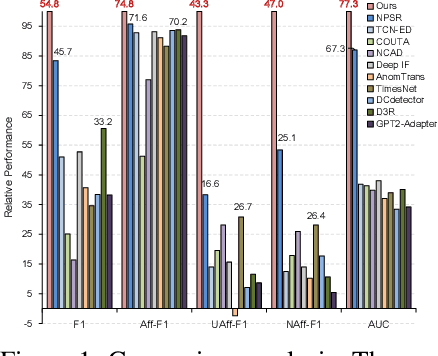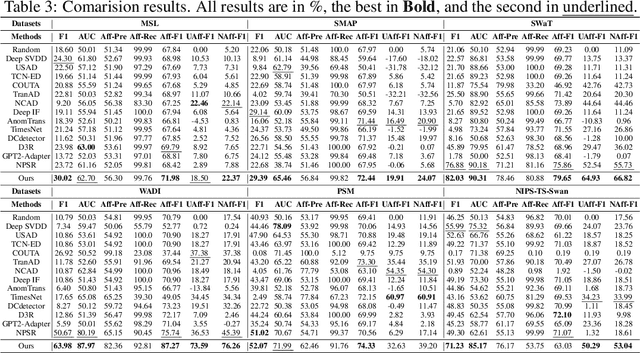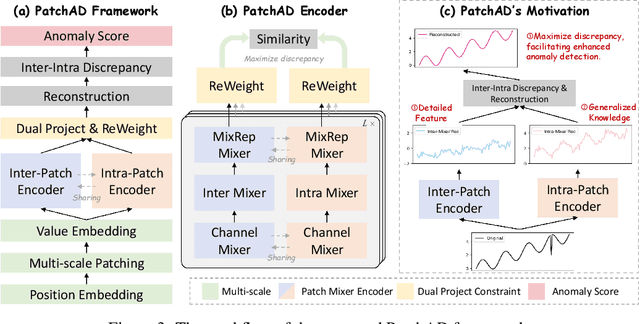Zhijie Zhong
AgentDNS: A Root Domain Naming System for LLM Agents
May 28, 2025Abstract:The rapid evolution of Large Language Model (LLM) agents has highlighted critical challenges in cross-vendor service discovery, interoperability, and communication. Existing protocols like model context protocol and agent-to-agent protocol have made significant strides in standardizing interoperability between agents and tools, as well as communication among multi-agents. However, there remains a lack of standardized protocols and solutions for service discovery across different agent and tool vendors. In this paper, we propose AgentDNS, a root domain naming and service discovery system designed to enable LLM agents to autonomously discover, resolve, and securely invoke third-party agent and tool services across organizational and technological boundaries. Inspired by the principles of the traditional DNS, AgentDNS introduces a structured mechanism for service registration, semantic service discovery, secure invocation, and unified billing. We detail the architecture, core functionalities, and use cases of AgentDNS, demonstrating its potential to streamline multi-agent collaboration in real-world scenarios. The source code will be published on https://github.com/agentdns.
A New Perspective on Time Series Anomaly Detection: Faster Patch-based Broad Learning System
Dec 07, 2024



Abstract:Time series anomaly detection (TSAD) has been a research hotspot in both academia and industry in recent years. Deep learning methods have become the mainstream research direction due to their excellent performance. However, new viewpoints have emerged in recent TSAD research. Deep learning is not required for TSAD due to limitations such as slow deep learning speed. The Broad Learning System (BLS) is a shallow network framework that benefits from its ease of optimization and speed. It has been shown to outperform machine learning approaches while remaining competitive with deep learning. Based on the current situation of TSAD, we propose the Contrastive Patch-based Broad Learning System (CPatchBLS). This is a new exploration of patching technique and BLS, providing a new perspective for TSAD. We construct Dual-PatchBLS as a base through patching and Simple Kernel Perturbation (SKP) and utilize contrastive learning to capture the differences between normal and abnormal data under different representations. To compensate for the temporal semantic loss caused by various patching, we propose CPatchBLS with model level integration, which takes advantage of BLS's fast feature to build model-level integration and improve model detection. Using five real-world series anomaly detection datasets, we confirmed the method's efficacy, outperforming previous deep learning and machine learning methods while retaining a high level of computing efficiency.
SimAD: A Simple Dissimilarity-based Approach for Time Series Anomaly Detection
May 18, 2024



Abstract:Despite the prevalence of reconstruction-based deep learning methods, time series anomaly detection remains challenging. Existing approaches often struggle with limited temporal contexts, inadequate representation of normal patterns, and flawed evaluation metrics, hindering their effectiveness in identifying aberrant behavior. To address these issues, we introduce $\textbf{{SimAD}}$, a $\textbf{{Sim}}$ple dissimilarity-based approach for time series $\textbf{{A}}$nomaly $\textbf{{D}}$etection. SimAD incorporates an advanced feature extractor adept at processing extended temporal windows, utilizes the EmbedPatch encoder to integrate normal behavioral patterns comprehensively, and introduces an innovative ContrastFusion module designed to accentuate distributional divergences between normal and abnormal data, thereby enhancing the robustness of anomaly discrimination. Additionally, we propose two robust evaluation metrics, UAff and NAff, addressing the limitations of existing metrics and demonstrating their reliability through theoretical and experimental analyses. Experiments across $\textbf{seven}$ diverse time series datasets demonstrate SimAD's superior performance compared to state-of-the-art methods, achieving relative improvements of $\textbf{19.85%}$ on F1, $\textbf{4.44%}$ on Aff-F1, $\textbf{77.79%}$ on NAff-F1, and $\textbf{9.69%}$ on AUC on six multivariate datasets. Code and pre-trained models are available at https://github.com/EmorZz1G/SimAD.
PatchAD: Patch-based MLP-Mixer for Time Series Anomaly Detection
Jan 24, 2024



Abstract:Anomaly detection stands as a crucial aspect of time series analysis, aiming to identify abnormal events in time series samples. The central challenge of this task lies in effectively learning the representations of normal and abnormal patterns in a label-lacking scenario. Previous research mostly relied on reconstruction-based approaches, restricting the representational abilities of the models. In addition, most of the current deep learning-based methods are not lightweight enough, which prompts us to design a more efficient framework for anomaly detection. In this study, we introduce PatchAD, a novel multi-scale patch-based MLP-Mixer architecture that leverages contrastive learning for representational extraction and anomaly detection. Specifically, PatchAD is composed of four distinct MLP Mixers, exclusively utilizing the MLP architecture for high efficiency and lightweight architecture. Additionally, we also innovatively crafted a dual project constraint module to mitigate potential model degradation. Comprehensive experiments demonstrate that PatchAD achieves state-of-the-art results across multiple real-world multivariate time series datasets. Our code is publicly available https://github.com/EmorZz1G/PatchAD
 Add to Chrome
Add to Chrome Add to Firefox
Add to Firefox Add to Edge
Add to Edge